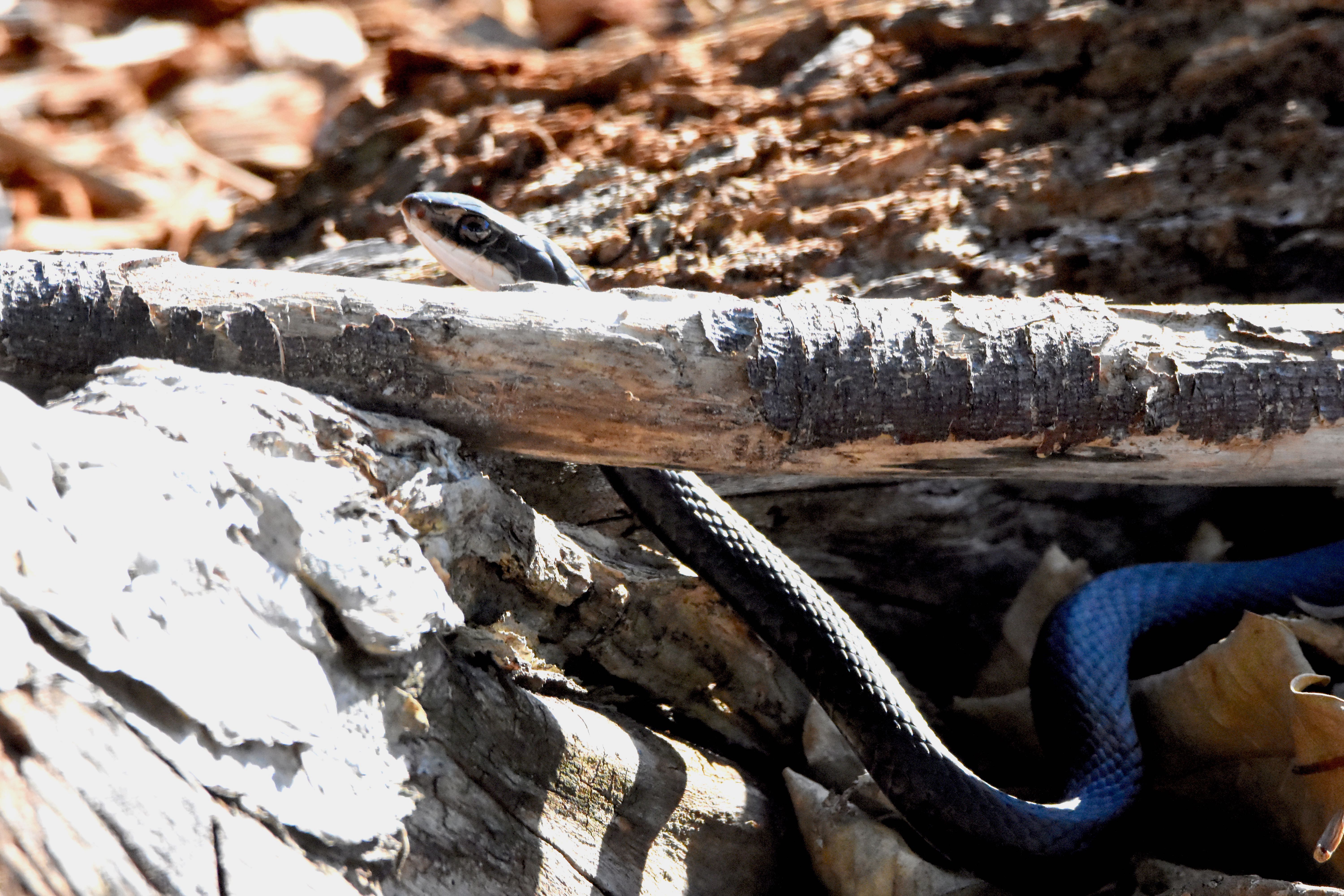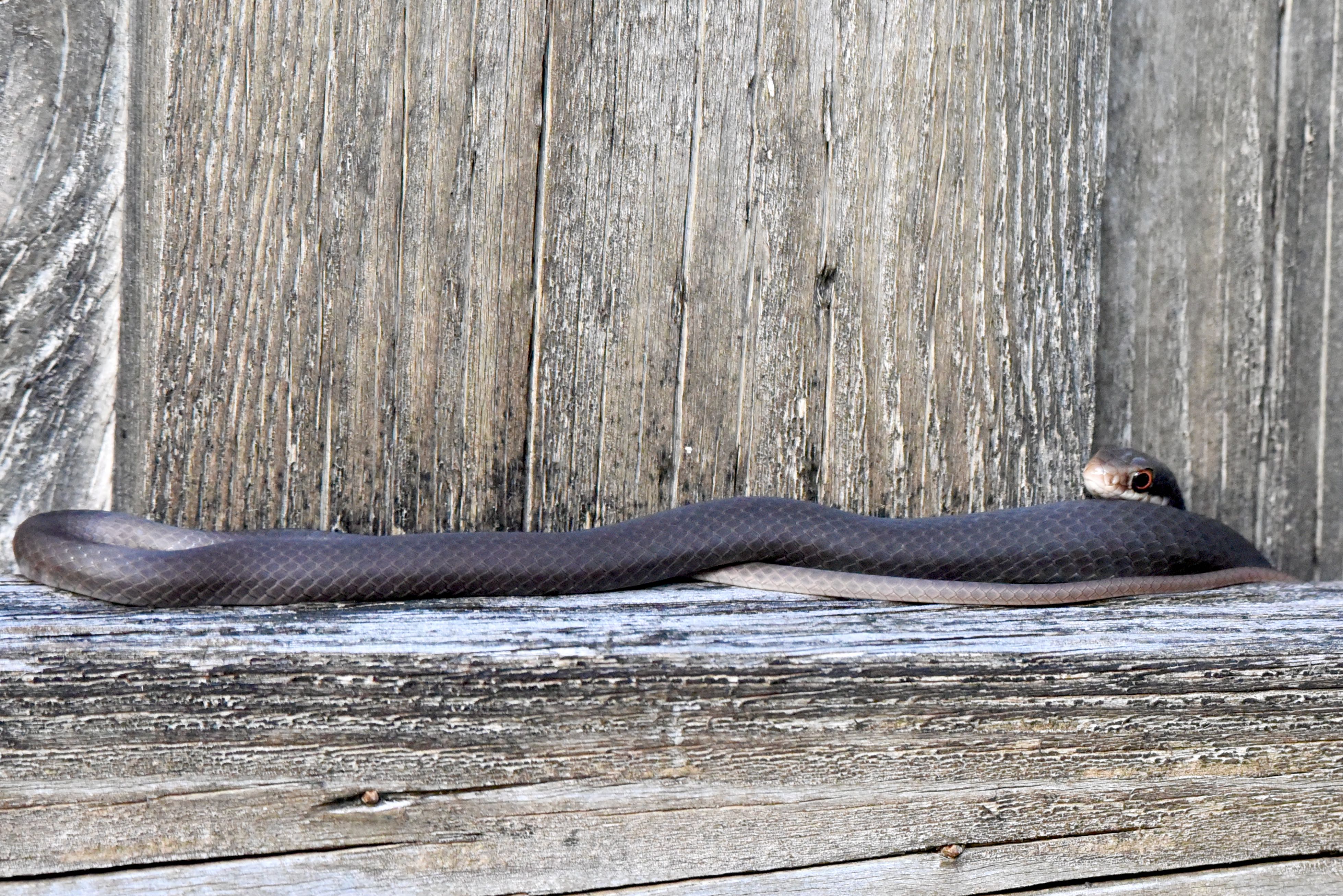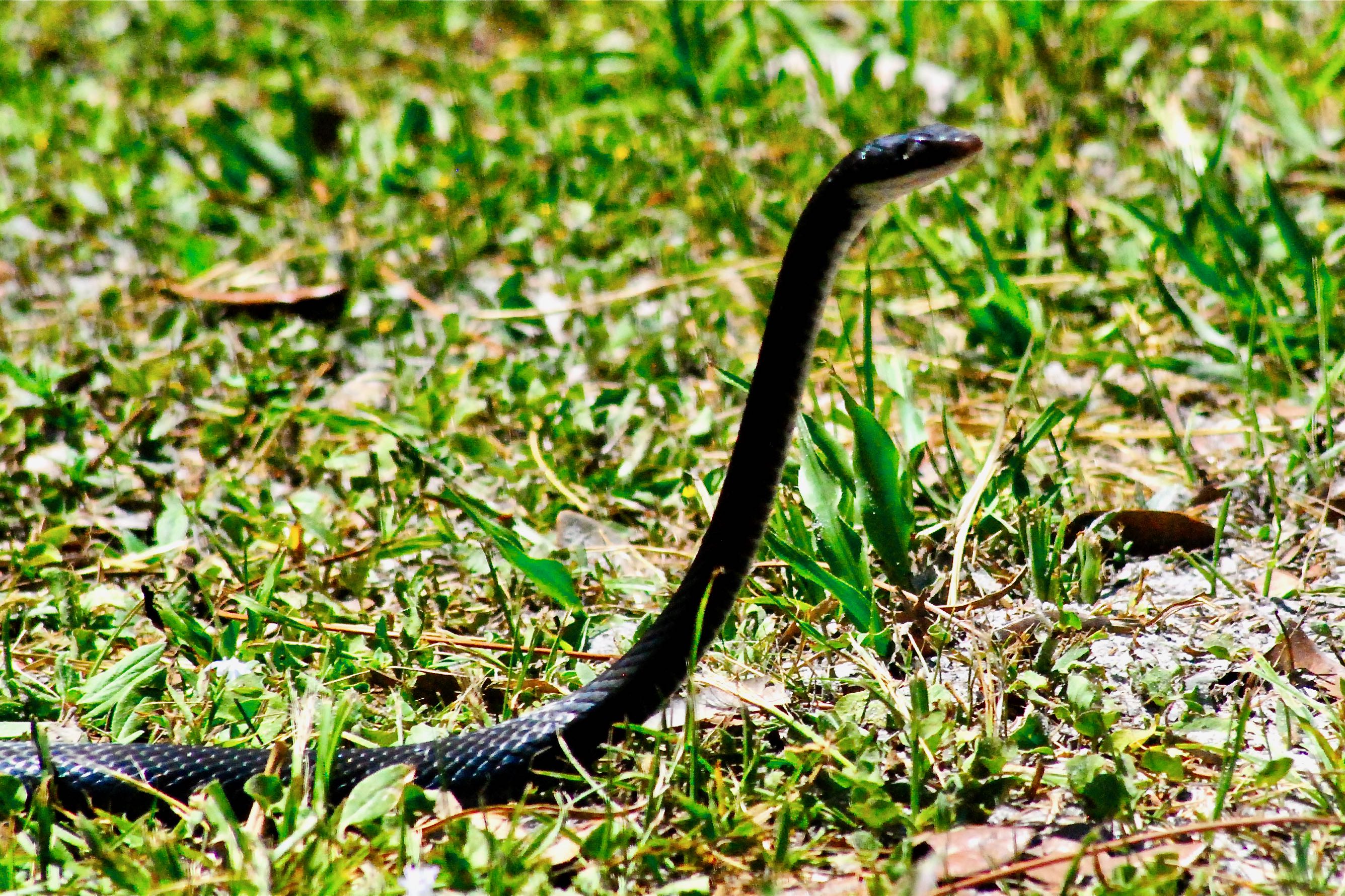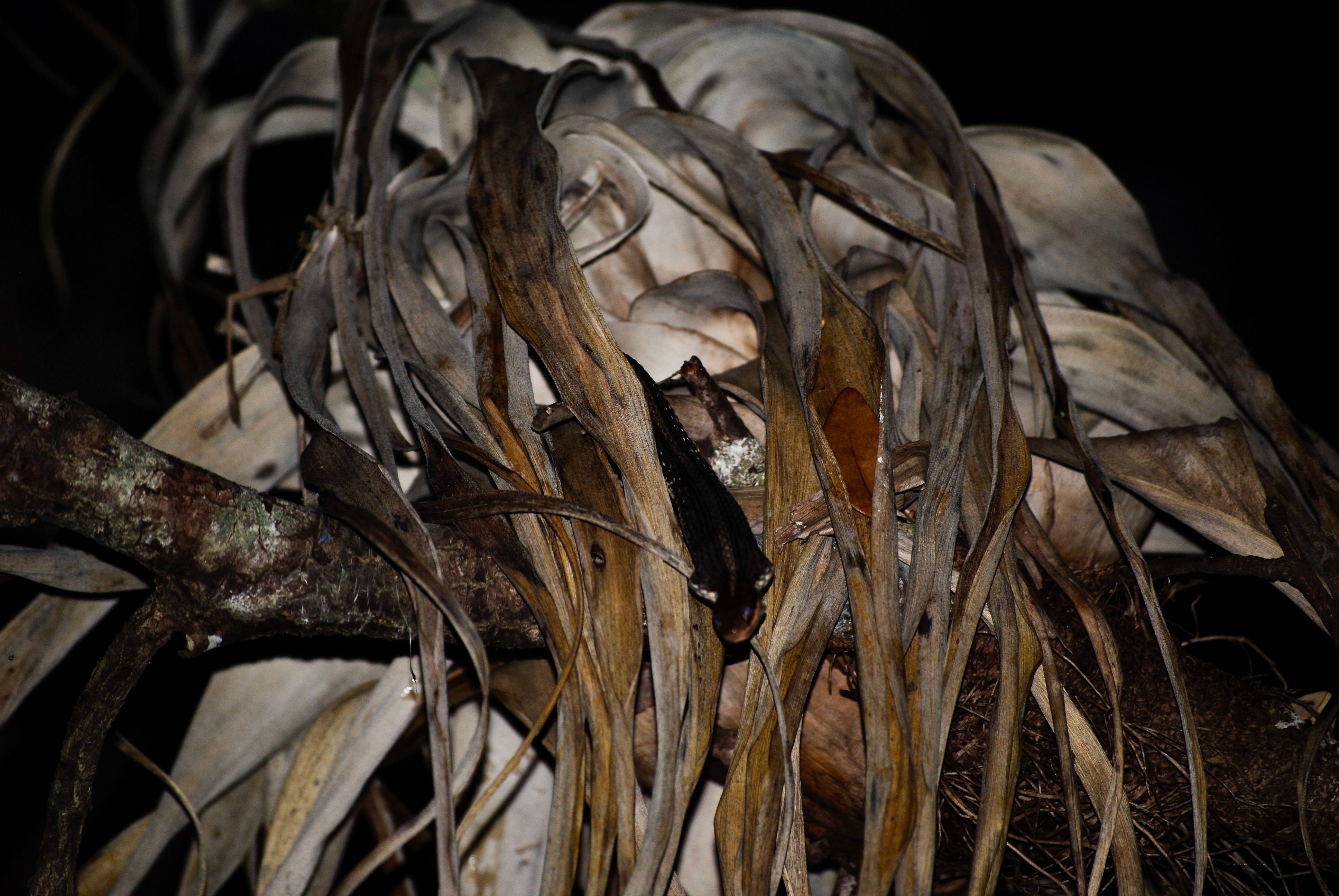
Southern black racer, photographed at Jupiter Inlet Outstanding Natural Area, Jupiter, Palm Beach County, in April 2018.
This constrictor really isn't. The southern black racer is known in the scientific world as Coluber constrictor, but it doesn't constrict its prey as the name suggests. At least not in the way we think of constrictors. Instead, it grabs its target, holds it tight with its jaws and presses it into the ground until it stops struggling.
Then it swallows it whole.
The Southern black racer's common name has another contradiction. This snake can be found pretty much everywhere in the eastern half of the United States, from Texas to Minnesota to Maine to Florida. Restricted to the south, it's not. A better name that we've seen recently: North American black racer.
Southern black racers are found throughout Florida, including the Keys. It's a common snake throughout its range. Habitat includes pinelands, hammocks, scrubs, prairies, sandhils and cypress woods. It's also found in urban settings. Occasionally, we've seen them in our yard.
Most adults are between two to five feet long, with six feet being the record for this racer. Adults are uniformly black with white markings on the chin and throat. Its pupils are round. Juveniles, on the other hand, are mostly a blotchy reddish-brown with a solid black tail.
They don't call these snakes racers for nothing. They are fast, and would rather use speed to get away from danger than confront it. And it is skitterish. But if cornered, it will stand and fight, which means using its sharp teeth. It is non-venomous, however.
It's also an excellent climber and swimmer, as illustrated by the third photograph below showing a racer finishing a cuban tree frog while in the fronds of a cabbage palm.
Dinner for the southern black racer includes frogs (the afore mentioned photo of a snake swallowing a Cuban tree frog), lizards, rodents birds, bird eggs and small snakes. In turn, black racers are dinner for hawks, some mammals and larger snakes. Its biggest enemy, however, is human — fear and ignorance coupled with the occasional car accident takes a large toll on the southern black racer population.
It is most active during the day, hunting by sight. At night and in cool weather, it will retreat into burrows or take shelter under a log — snakes, after all, are reptiles, cold-blooded, with the need to preserve heat. Breeding season is March to June; a female will lay a clutch of 6 to 20 eggs that hatch between May and August.
Southern black racers are members of Colubridae, the largest family of snakes on the planet. Other common names include black racer, or simply racer.
Click on photo for larger image



